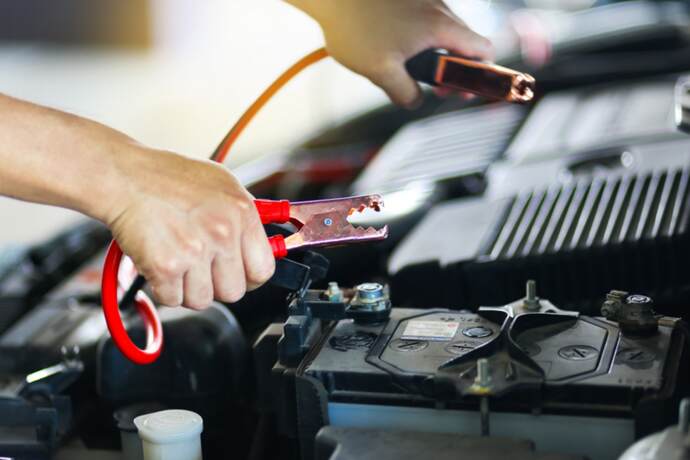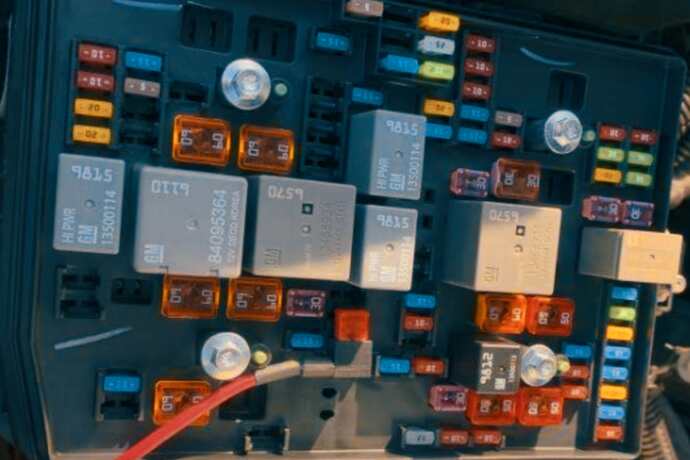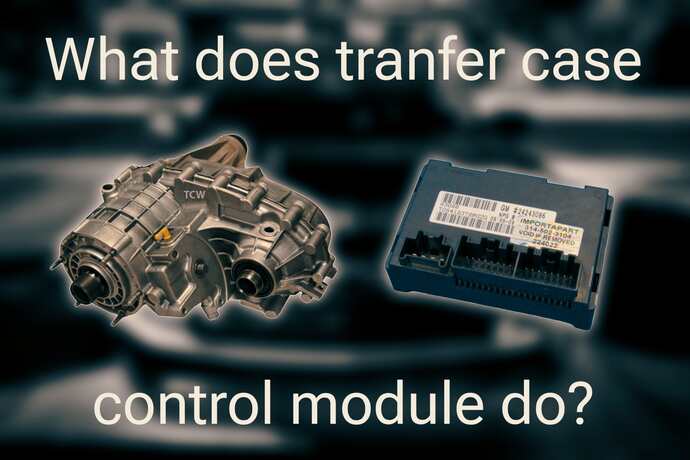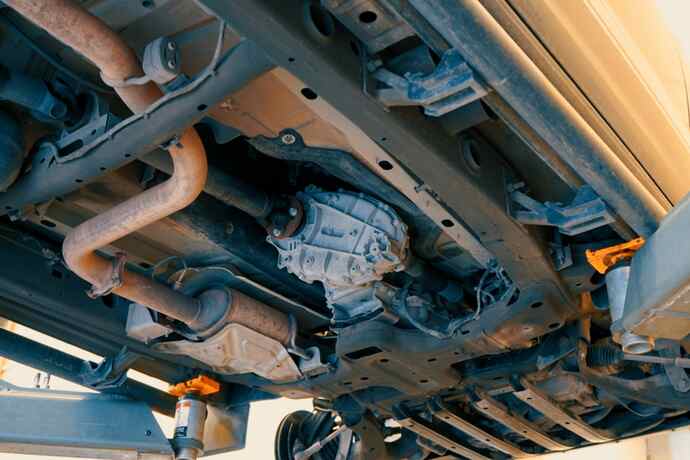The transfer case control module is an electronic component for automatic 4WD shifting in your Silverado.
Most Chevrolet Silverados have 4WD systems, and to shift between driving modes, a transfer case control module is necessary.
Your transfer case control module may have problems that can harm your truck. Resetting the problematic transfer case control module sometimes solves the issue and saves time.
In this article, I have discussed the common problems with the transfer case module, including their causes and symptoms, and how to reset transfer case control module Silverado.
You can reset your Silverado’s transfer case control module in three ways: draining all the charges, turning the acceleration on and off, and removing the TCCM fuse. These methods are very easy, and anyone can reset the TCCM.
Method 01: Draining All the Charges

Draining all the electric charge from your vehicle is the universal method to reset the ECU and all electronic components. It works on most vehicles and electronic equipment.
Follow these 12 steps for draining all changes in your Silverado:
- First, open the hood and locate the battery.
- Next, open the negative battery cable.
- Secure the cable and battery points with insulators.
- Don’t let the cables shorten or touch any metal objects.
- Connect the cable’s negative and positive ends with a jumper cable.
- Let it be this way for about 10–30 minutes, and it will drain all the charges from the electronic components.
- After the time period, disconnect the jumper and reconnect the negative cable end with the battery.
- Now, turn on only the ignition and keep it for 10–20 seconds.
- After the time period, turn off the ignition and repeat the cycle a few times.
- Don’t turn on any other electronic equipment during this time.
- Now turn on the engine and let it idle for more than 5 minutes.
- Later, check all the sensors and electronic components to see if they are working or not.
Watch this video for a visualization of the process.
Now, you have successfully reset the ECU and TCCM. By using this method, your computer can relearn the vehicle’s characteristics. If method 1 doesn’t work, follow methods 2 and 3.
Method 02: Turning the Accelerator On and Off
You can reset your TCCM by turning the accelerator on and off in a cycle. This is the easiest method, as you won’t need any extra tools.
Follow these 5 steps to reset your TCCM:
- First, turn on the engine and secure the key position.
- Now press and hold the accelerator for about 5–10 minutes.
- Then, switch off the ignition and remove your foot from the accelerator.
- Wait a few minutes and repeat the procedure 3–5 times.
- Now, your TCCM should be reset and ready to work.
By following this method, the transmission and combustion processes will reset the TCCM. If this method doesn’t work, follow method 3.
Method 03: By Removing the TCCM Fuse

You can also reset the TCCM by removing the TCCM fuse for a certain time.
Follow these 8 steps to reset the transfer case control module:
- Find the TCCM fuse located at the end of the fuse box.
- Wait for half an hour while the vehicle is without power.
- Now, check the fuse and place it in the fuse box again.
- You can now turn on the ignition and let it idle for a few minutes.
- Turn off the engine after 5 minutes and repeat the cycle a few times.
- By the time check for vehicle lights blinking, which means the control module is processing.
- Check the engine and transmission to see if they are working properly or not.
- Now, your TCCM should be reset and ready to use.
If your Silverado still doesn’t work, there is a physical problem with the transfer case or the control module. You will need to replace the transfer case or the control module. Take your truck to a nearby mechanical shop for repairs.
What Does a Transfer Case Control Module Do?

The transfer case control module works with an automatic transmission.
TCCM is a composition of electrical and mechanical parts. The features of TCCM are as follows:
1. Shifting Gears: Shifting gears on time is crucial for operating a vehicle. When a TCCM gets a shift request, it processes the request and performs the shifting. TCCM shifts the wheel drive system according to the gear shifting, resulting in accuracy.
2. Sensor Controlling: TCCM controls with a set of sensors to collect shifting data. It works with the transmission and sends data to the clutch control. This way, the shifting occurs efficiently.
3. Store Driving Data: The electronic part of the TCCM works with the sensors and collects your driving data. It helps the control module shift more precisely. Driving conditions may vary with different terrain, and TCCM corrects the timing and shifting accordingly.
4. Cooperate with the ECU: The TCCM is also an electric module that works with the vehicle’s main computer. The shifting request is processed through the ECU.
It is very necessary for the electronic equipment to work cooperatively. Otherwise, the vehicle won’t be able to work efficiently.
5 Causes of Transfer Case Control Module Problems

Wear and tear are the main reasons for transfer case control module failure. Irregular maintenance can also cause issues.
There are also some other factors causing the TCCM to malfunction. Let’s discuss the common causes of TCCM failure:
1. Wiring Issues: Wiring problems can cause the transfer case control module to stop working. The main causes of wiring problems are loose or damaged connections.
2. Physical Damage: Any type of physical damage can cause the TCCM to stop working. Dropping the module can damage it physically. Another reason is to sustain damage from other objects. These issues can physically damage the module.
3. Surge in Power: A power surge can happen any time. A loose connection or a bad battery can cause a power surge. Also, in the case of a dead battery, a new battery can cause a surge in power while connected. A power surge can damage the electronic components of the module.
4. Water Damage: Water is dangerous for any electric module. Water can leak into your vehicle if you drive in the rain. If the water reaches your TCCM, it will damage the module.
5. Change of Temperature: Electronic components are sensitive to temperature. Generally, any electronic component can work at a high temperature. However, driving in very hot and cold temperatures can cause the module to malfunction and stop working.
7 Symptoms of a Bad Transfer Case Control Module

There will be some symptoms that will indicate that there are problems with the TCCM. The common symptoms of a bad transfer case control module are:
1. 4WD not working properly: Faulty transfer can cause the 4WD not to work properly. You will feel trouble in 4WD shifting and vibration from the transfer case. If that happens, the 4WD light will malfunction. Check the transfer case in that case and the module.
2. Improper shifting: The transfer case module works with the transmission. Your Silverado doesn’t work properly when the transfer case has issues. This is another indication you should check out.
3. Noise from the module: The transfer case is made with gears and connects the transmission with the axles. Faulty transfer case modules will make a loud noise. If you find unusual noise from your transfer case, there may be a problem with it. Diagnose the transfer case and the control module in that case.
4. Overheating: Overheating is a very common cause for any component of a vehicle to have problems. A malfunctioned transfer case can overheat over time.
5. Bad case fluid: The transfer case also needs lubricant oil to operate. The oil can become bad over time and leak. Low-case fluid causes the transfer case not to work properly.
6. Burning smell: If a burning smell is coming out of the transfer case or the control module, there must be a problem. You should diagnose the module right away.
7. Check engine light: Transfer case control module failure can trigger the check engine light. You should scan your vehicle with an OBD-II scanner or immediately take it to an auto mechanic like me.
Why Transfer Case Control Module Need Resetting?
TCCM is a very important part of your vehicle. It is directly related to transmission and drive mode shifting. Malfunctioning TCCM can cause your truck to be stuck in 4WD mode and not be able to shift into 2WD.
Also, a bad TCCM can hamper your driving experience with inaccurate shifting. If there are problems with the transfer case, it can cause issues with the transmission shifting.
TCCM processes and executes the shifting command. So, there can be performance issues with your vehicle. Transfer case also shifts automatically according to your driving data. A bad transfer case can trouble the efficiency of your vehicle.
Moreover, faulty TCCM can cause bigger issues if not taken care of. You should check your transfer case and control module every three months for any issues.
How to Prevent Transfer Case Control Module Failure in the Future
TCCM is a very important part of your vehicle, and you should take care of it properly.
You can easily prevent the failure of a TCCM by following these 8 preventive steps:
- Check your transfer case every three months.
- Look out for any unusual grinding, humming, or growling noise from the transfer case.
- Replace the transfer case fluid occasionally.
- Change your habit of driving if necessary.
- Check for overheating issues in time.
- Replace the transfer case frequently so that it doesn’t damage other vehicle components.
- Reset the TCCM if you find any issues.
- If you see any transfer case issues, immediately diagnose and repair them.
FAQs
How much does a TCM module cost?
The new transfer case control module costs around $620–$650, with a labor cost of $100–$120. Older or remanufactured TCCM costs around $400. Transfer case replacement costs are around $2000–$2890.
Can you drive with a bad transfer case control module?
It depends on the condition of your truck’s transfer case. If the gears are not broken, and 2WD is working, you can drive for a short time.
However, it is not suggested to drive with a bad transfer case. Driving with a bad transfer case can lead to transmission and other issues.
What happens if transfer case is low on fluid?
The components don’t work properly when the transfer case fluid is low. Overheating and unintended shifting may also happen with the transfer case. You should ensure a proper amount of transfer case fluid for safety.
Can bad transfer case damage transmission?
A bad transfer case can obviously damage the transmission. The transfer case connects the transmission and the axles. Also, driving with a bad transfer case can damage your vehicle.
What happens if your transfer case goes out while driving?
Transfer cases can go out while you are driving. It can cause unintended drive system shifting and damage the transmission. Moreover, it can cause control issues, leading to accidents. So, you should stop your vehicle as soon as the transfer case fails.
Final Thoughts
The transfer case control module is one of the main components of a 4WD vehicle. If you face any issues with the transfer case or the module on your Silverado, you should reset it.
Sometimes, you may need to follow all the methods to reset the transfer case control module. Also, you should not drive with a bad transfer case, as it will damage other components. You may also need to replace the component, as it will save you money by not damaging other parts.

